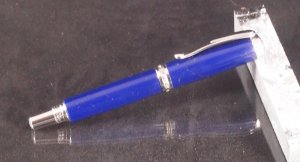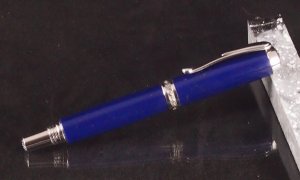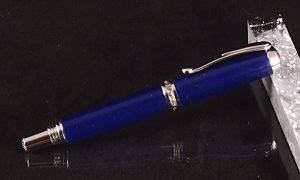Sylvanite
Member
Some time ago, I was in the hospital for tests and had to wear a gown that fastened in the back - with nothing on underneath. Walking down the halls, I definitely felt "over-exposed". That is not, however, what I plan to discuss today.
No, by "exposure", I mean controlling how bright one's photograph turns out. An overexposed photo is too light. An underexposed photo is too dark. A correctly exposed photograph looks exactly as bright the photographer intended it too look.
Signs of overexposure include:
There are three things that control exposure in todays digital cameras:
The camera body has a "shutter", which opens to expose the image sensor to light, and shuts again when done. The duration that the shutter is open is the shutter speed. It is typically measured in fractions of a second. The longer the shutter is open (the slower the shutter speed), the brighter the exposure. Very slow shutter speeds can lead to blur if the camera or the subject move at all.
For film cameras, different photographic films are available that have different sensitivities to light. "Faster" films, that have higher "ASA" or "ISO" ratings, react more quickly to light. Digital cameras typically have an adjustable sensitivity usually called the "ISO setting". Just like with film, a higher value means the sensor is more sensitive to light and will produce brighter images. The downside to higher sensitivity is increased noise. On film, that noise is referred to as "grain". In digital cameras it typically shows up as "pixelization".
In automatic modes, a digital camera will adjust aperture, shutter speed, and ISO setting to control the exposure. The results are generally acceptable for most snapshots, but often disappointing for staged pen pictures. For the best quality photographs, one needs to take control of these settings.
Some controls to set exposure:
Remember I said that f-stop numbering makes sense mathematically, but not intuitively? Well, that's because f-stop is a measure of diameter, and the amount of light the aperture lets through is proportional to the square root of 2. F-stops are conventionally numbered: 1, 1.4, 2, 2.8, 4, 5.6, 8, 11, 16, 22, 32, etc. Many camera lenses permit adjustments between these values, but each full f-stop increase lets in half as much light (remembering that higher f-stop value means smaller aperture). So (keeping ISO constant), if you want to maintain a given exposure, for each single increase in f-stop, you'd need to halve the shutter speed (double the exposure time).
Whew, that's a lot of information. Does it help you take pen photos? Probably not, but it's necessary groundwork to understand for later discussions. I plan to present some of those topics in future threads.
I hope that was interesting,
Eric
No, by "exposure", I mean controlling how bright one's photograph turns out. An overexposed photo is too light. An underexposed photo is too dark. A correctly exposed photograph looks exactly as bright the photographer intended it too look.
Signs of overexposure include:
- Loss of detail in the highlights - which we call "blown out".
- A general pale appearance.
- Colors that lose their vibrancy - that is they appear pastel or "washed out".
- Loss of shadow detail.
- An overall dark appearance.
- Low contrast, which produces a dull, or "muddy" tone.
There are three things that control exposure in todays digital cameras:
- Aperture.
- Shutter speed.
- Sensitivity (a.k.a. "ISO setting").
The camera body has a "shutter", which opens to expose the image sensor to light, and shuts again when done. The duration that the shutter is open is the shutter speed. It is typically measured in fractions of a second. The longer the shutter is open (the slower the shutter speed), the brighter the exposure. Very slow shutter speeds can lead to blur if the camera or the subject move at all.
For film cameras, different photographic films are available that have different sensitivities to light. "Faster" films, that have higher "ASA" or "ISO" ratings, react more quickly to light. Digital cameras typically have an adjustable sensitivity usually called the "ISO setting". Just like with film, a higher value means the sensor is more sensitive to light and will produce brighter images. The downside to higher sensitivity is increased noise. On film, that noise is referred to as "grain". In digital cameras it typically shows up as "pixelization".
In automatic modes, a digital camera will adjust aperture, shutter speed, and ISO setting to control the exposure. The results are generally acceptable for most snapshots, but often disappointing for staged pen pictures. For the best quality photographs, one needs to take control of these settings.
Some controls to set exposure:
- Macro. Many cameras have a close-up or "macro" mode. It's typically indicated by a flower icon. What exactly this mode does varies by manufacturer. Generally, it will favor moderate to small aperture and balance the other two settings accordingly.
- Landscape. Again, the exact details are brand/camera specific, but "landscape" mode favors small apertures. The camera sets shutter speed and (possibly) sensitivity as well.
- Aperture priority. In this mode, you pick the specific aperture you want, and the camera sets the shutter speed accordingly. It may also set the sensitivity, or you may specify the ISO setting. Check your camera manual for details.
- Aperture priority with exposure compensation. Sometimes, the built-in light meter simply doesn't do what you want (often when using a white or black background) and over or underexposes a picture. To handle such situations, many cameras have an "exposure compensation" setting. It allows you to increase or decrease the exposure - usually by some number of "EV units". Each EV unit will halve or double the shutter speed.
- Manual. Most digital cameras have a manual mode, which allows you to pick the aperture, shutter speed, and ISO setting you want. This gives you complete control of the exposure.
- Exposure bracketing. Some cameras can take multiple pictures, varying the exposure. Then you can pick which one looks best later.
- Histogram. A histogram is a graph that shows how much of a picture is how bright. Many cameras have a built-in histogram display. If the histogram shows a peak at the very left, the photo is probably underexposed. A peak on the right inidcates overexposure. You can adjust exposure accordingly.
- Blowout indicator. When previewing a photo, some camera viewscreens blink in areas that are overexposed. That might indicate a need to change exposure.
Remember I said that f-stop numbering makes sense mathematically, but not intuitively? Well, that's because f-stop is a measure of diameter, and the amount of light the aperture lets through is proportional to the square root of 2. F-stops are conventionally numbered: 1, 1.4, 2, 2.8, 4, 5.6, 8, 11, 16, 22, 32, etc. Many camera lenses permit adjustments between these values, but each full f-stop increase lets in half as much light (remembering that higher f-stop value means smaller aperture). So (keeping ISO constant), if you want to maintain a given exposure, for each single increase in f-stop, you'd need to halve the shutter speed (double the exposure time).
Whew, that's a lot of information. Does it help you take pen photos? Probably not, but it's necessary groundwork to understand for later discussions. I plan to present some of those topics in future threads.
I hope that was interesting,
Eric



